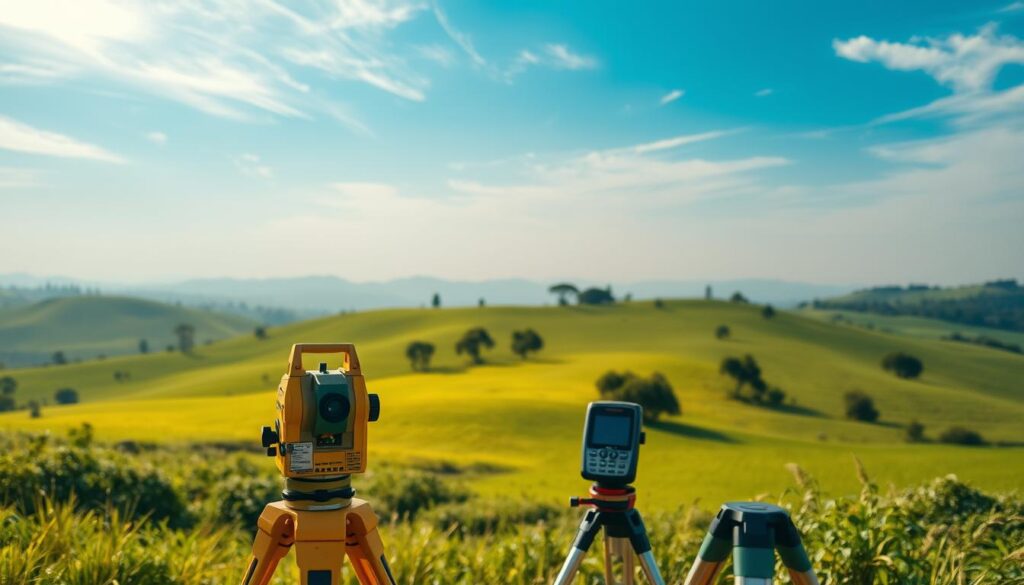Smartphones have revolutionized the way we handle everyday tasks. Today, even technical tasks, like calculating land areas, can be performed with them. precision using only your cell phone. Advanced technologies have transformed these devices into professional tools, replacing complex and expensive equipment.
Those who work in agriculture, construction, or surveying are already feeling the benefits. Digital solutions offer fast measurements, GPS integration, and even satellite image analysis. This democratizes access to resources previously limited to high-investment specialists.
Practicality is one of the biggest attractions. With a app Once installed, simply point the camera or walk around the site to get reliable data. Portability allows you to use these tools in the field without the need for additional devices.
For home users, the advantage lies in simplicity. Measuring a yard or checking the dimensions of a property has become a matter of minutes. Features like augmented reality elevate the experience, blending technology and functionality.
The current market offers adaptable options to different needs. Whether for large or small projects, these solutions combine efficiency and affordable. In the next sections, we'll explore how to choose the best option for your goals.
Introduction: The revolution of apps in land measurement
Accurate measurements are now affordable, thanks to the evolution of cell phones. The combination of advanced sensors and smart software allows anyone to perform detailed area analyses, replacing professional equipment. This change not only reduces costs but also simplifies technical processes.
The impact of smartphones on measurement
Modern devices have high-precision accelerometers, gyroscopes, and GPS. These components turn your phone into a multifunctional tool, capable of calculating distances and areas with minimal error. Construction professionals, for example, save hours of field work.
Why invest in this technology?
In addition to practicality, the mobile technology offers cloud integration and automated reporting. Farmers can map crops and share data with agronomists in real time. For regular users, checking field dimensions is just a click away.
How measurement apps work
Professional precision is now within everyone's reach through smart mobile solutions. Three technologies combine to transform complex measurements into simple processes: geolocation, advanced visualization, and integration with external systems.
Use of GPS, augmented reality and satellites
THE GPS identifies exact coordinates through satellite signals. By marking locations on the digital map, the software calculates distances between these points with a margin of error of less than 2 meters in open areas.
THE augmented reality overlays virtual information on the real environment captured by the camera. This allows you to visualize land boundaries and manually adjust measurements, as if using a digital tape measure.
Automatic marking and calculation process
First, the user defines the boundaries of the area by walking around the location or selecting strategic points on the map. Internal sensors record movements and tilts to correct possible distortions.
Algorithms cross-reference satellite information with images in high resolution to validate measurements. In seconds, the system generates reports with perimeter, total area, and even contour lines.
It is worth noting that the quality of the data depends on satellite connection and device calibration. Terrain with many obstructions or uneven terrain may require additional manual checks.
Main features and resources available
Modern solutions integrate multiple functions into a single platform. This transforms mobile devices into control centers complete solutions for managing physical spaces, from small lots to large properties.

Real-time measurements and data accuracy
Results appear on the screen as you mark points on the map or walk around the location. Sensors update instantly area and perimeter calculations, allowing for immediate adjustments. The precision varies between 1% and 5%, depending on GPS calibration and terrain conditions.
Features like automatic tilt correction eliminate errors caused by uneven terrain. In urban areas, combining satellites with Wi-Fi improves accuracy for projects that require millimeter-level detail.
Exporting, saving and sharing measurements
Once finished, export files to Technical PDF or AutoCAD-compatible formats. Options like KML and Shapefile integrate measurements into geoprocessing systems, essential for engineers and architects.
Cloud backup protects against data loss and allows remote access. Share comprehensive reports with 3D graphics via a single link, facilitating collaboration. real time between dispersed teams.
Version history and comparison between previous measurements help monitor changes in the terrain. These resources professionals optimize any type of project, from home renovations to large-scale agricultural planning.
Benefits of apps for professionals and users
The adoption of mobile technologies for measuring physical spaces has brought transformative benefits to various sectors. Professionals gain operational efficiency, while users households solve everyday needs with a simple tap the screen.
Saving time and reducing costs
A traditional survey requires up to 8 hours with specialized teams. With applications, the same process takes 15 minutes using only the cell phone. This represents a 95% reduction in time spending, freeing up resources for other activities.
Equipment such as total stations cost up to R$ 80,000. The digital version eliminates this initial investment, operating as tool multifunctional. Designers can allocate savings to technical improvements or service expansion.
Ease of use and accessibility in the field
Simplified interfaces allow use immediate access even by laypeople. Farmers map crops in remote areas without internet access, while firefighters measure risk zones during emergencies.
The device's portability facilitates access to inhospitable locations. Surveyors replace 30 kg of equipment with a smartphone, taking precise measurements on slopes or in dense forests. Integration with platforms like AutoCAD streamlines data transfer for final designs.
Comparison between free and paid apps
The choice between free and paid versions determines the efficiency of area management. While apps Basic solutions meet specific needs, while premium solutions offer strategic resources for complex projects. Understanding these differences optimizes investments and results.
Premium features versus basic functionality
Free versions allow for simple measurements and data export in standard formats. Paid plans, such as GPS Fields Area Measure, include cloud synchronization and customized reports. Removing ads and adding photos to measurements are key features for professional use.
Annual or monthly subscriptions unlock features like version history and priority support. On the other hand, freemium models limit the number of daily measurements. This directly impacts projects that require multiple simultaneous surveys.
Advantages of each business model
For casual users, free versions are sufficient. Professionals find cost-benefit On paid plans: each R$ 1 invested can save up to 3 hours of work. Free 7- to 14-day trials allow you to evaluate advanced features before making a financial commitment.
Engineering firms prefer annual subscriptions with regular updates. Farmers, on the other hand, may opt for seasonal packages. Analyzing usage frequency and task complexity will help determine the best option.
Challenges and limitations of measurement applications
Despite advances, understanding technical constraints is crucial to making the most of these digital tools. Environmental conditions and device capabilities directly influence the quality of the information collected.
Dependence on internet and GPS signal
In rural or rugged areas, satellite connectivity may fail. Apps that require the internet to load maps experience interruptions, while offline versions rely solely on the internet. GPS – which requires a clear view of the sky for greater precision.
Solving this requires planning: downloading pre-built maps in urban areas or using devices with reinforced GPS antennas. Calibrating the equipment before use reduces errors in data capture. data essential.
Beware of the margin of error in large areas
Measuring large properties magnifies small deviations. A variation of 2% on a 10-hectare plot represents a 2,000 m² difference. Land with dense vegetation or buildings requires manual checks to confirm automated results.
Strategies such as dividing the area In smaller sectors, using physical reference points improves accuracy. In critical projects, combining digital measurements with traditional techniques ensures complete reliability.
